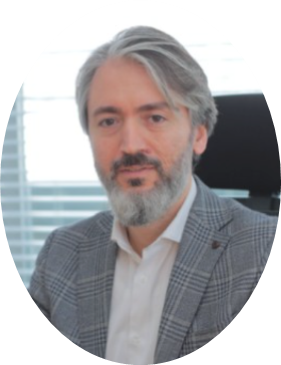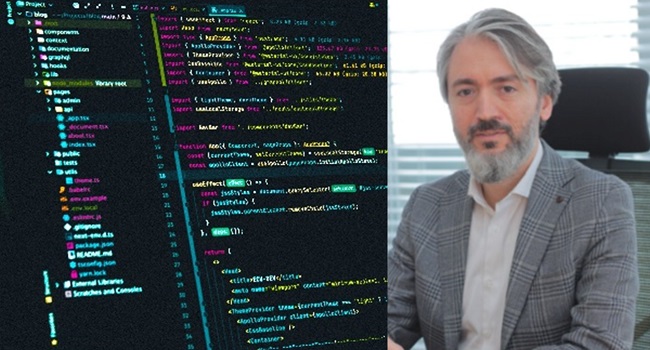How can startups patent their innovative software?
Today, there is almost no business model that is not related to software, and many startups are trying to find a place in their target markets by developing software-oriented solutions. Then one of the first questions that comes to mind is: how can I protect my software from being copied in order to gain a share of the market and stay competitive?
As a preliminary information, generally, software that solves a technical problem can be a candidate for being patented, while software that solves non-technical problems cannot be patented. An example of non-technical problems are administrative problems related to finance, human resources, etc.
Information and Communication Technologies (ICT) command the largest share of the global patent landscape. In the realm of ICT, inventions often fall under the category called “Computer Implemented Inventions (CII)”. The question of which CII can be protected by patent and which cannot remains a current topic of debate among intellectual property professionals. It’s worth noting that countries like the United States, South Korea, and Japan adopt a more inclusive approach to the patenting of computer-implemented inventions compared to Europe. In this article, I will briefly discuss the practice in the Europe Patent Office (EPO).
The EPO applies the “two hurdle approach” when analysing the patentability of CII. The first hurdle is ‘patent eligibility’. If the claims of a patent application related to a CII mention the presence of hardware (for example, a computer), this condition is met. The second hurdle is the ‘inventive step’. This criterion, as is well known, applies to all patent applications, but it might become somewhat more complex in the case of CII.
In the examination of the inventive step for CII, only elements that contribute to solving a technical problem are considered. CII contain both technical elements (like computers, mobile phones) and non-technical elements (like computer programs). The assessment of the inventive step for such inventions is carried out under the Comvik Approach, established by the Technical Board of Appeal of the European Patent Office in 2002. In the Comvik approach, only elements that contribute to solving a technical problem are included in the assessment of the inventive step. Even if an element is non-technical in itself (like a computer program), it is considered if it contributes to solving a technical problem.
I would like to explain this approach with two simple examples. Let’s consider a patent application related to software designed to scan candidate resumes and select the most suitable candidate for a pre-defined position by an employer. If the independent claim of the patent application mentions that this process is performed by a computer, it passes the first hurdle of patent eligibility. However, for the second hurdle, this invention provides a solution more to an administrative problem (making the candidate selection process more efficient) rather than a technical one. Therefore, since there is no solved technical problem, there is also no element contributing to a technical problem. In this case, the examiner will reject the patent application without further assessment for failing to meet the inventive step criterion.
For such software, the only way to protect it would be through trademark registration of the software’s name, copyright for the software codes, and copyright or design registration for the user interfaces. Of course, these instruments provide legal protection mainly against direct or very similar copies of the protected subject matter, rather than the broad protection a patent right would offer.
Another example would be a patent related to software that extends the maintenance cycle of a laser cutting machine and runs on an industrial computer connected to the machine. Extending the time a machine requires maintenance solves a technical problem. In this case, the examiner will look at which elements solve this problem. Let’s assume the independent claim of the patent application includes both technical elements (an industrial computer) and non-technical elements (a machine control software and maintenance statistics software running on said industrial computer). During the inventive step assessment, the examiner will disregard the maintenance statistics software. This software, rather than contributing to solving the technical problem mentioned, provides a solution more towards ‘presentation of information’, which falls outside patentability. On the other hand, the examiner will consider the working principle (algorithm) given in the claims related to the machine control software, analyse whether this principle could be evidently derived by a person skilled in the art in light of prior technical knowledge, and then make a decision on the presence of an inventive step accordingly.
About the author:
 After having studied Electronics Engineering in Turkey, Erdem became a Turkish and European patent attorney in 2001 and a Turkish trademark attorney in 2005. Erdem is the founder of Erdem Kaya Patent, one of the respected IP firms of Turkey, with a team of +50 IP professionals. Throughout his professional life, he and his team have provided wide range of IP consultancy services to many companies and universities as well as hundreds of startups and provided IP trainings to thousands of people. Erdem also acted as the president of a National Patent Union called UPB for 2 terms, where he carried out projects aimed at increasing IP awareness of the society and expertness level of IP professionals in Turkey. He is also among the partners of Sistem Global Consulting, Inc., which provides services as regards tax & audit, compliance management and access to incentives/supports with its team of +450 people. Finally, Mr. Kaya is a licensed angel investor and active member of many IP organizations such as EPI, LES, AIPPI, GRUR and INTA.
After having studied Electronics Engineering in Turkey, Erdem became a Turkish and European patent attorney in 2001 and a Turkish trademark attorney in 2005. Erdem is the founder of Erdem Kaya Patent, one of the respected IP firms of Turkey, with a team of +50 IP professionals. Throughout his professional life, he and his team have provided wide range of IP consultancy services to many companies and universities as well as hundreds of startups and provided IP trainings to thousands of people. Erdem also acted as the president of a National Patent Union called UPB for 2 terms, where he carried out projects aimed at increasing IP awareness of the society and expertness level of IP professionals in Turkey. He is also among the partners of Sistem Global Consulting, Inc., which provides services as regards tax & audit, compliance management and access to incentives/supports with its team of +450 people. Finally, Mr. Kaya is a licensed angel investor and active member of many IP organizations such as EPI, LES, AIPPI, GRUR and INTA.
Erdem Kaya
Turkish and European Patent Attorney
Electronics Engineer
e.kaya@erdemkayapatent.com



